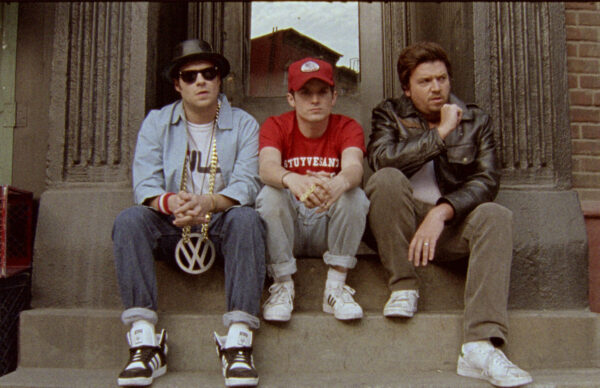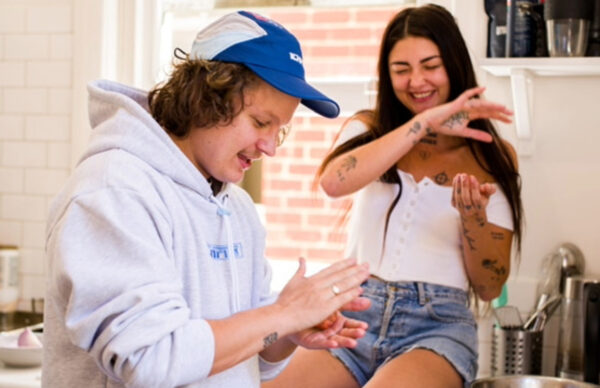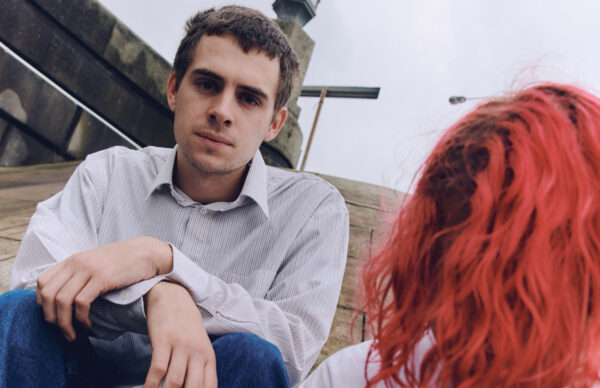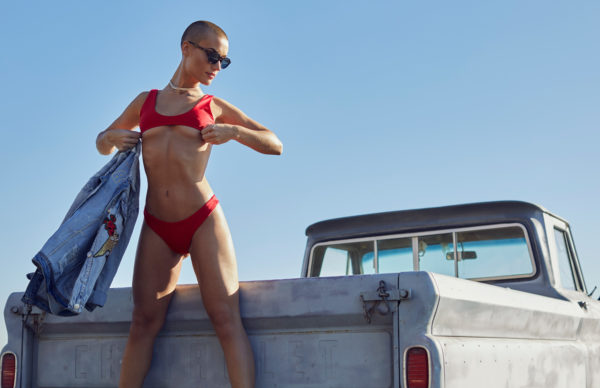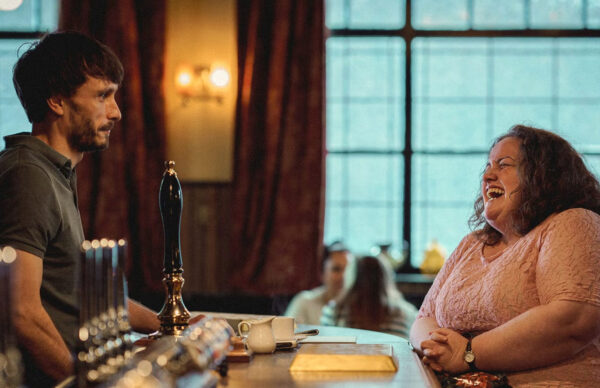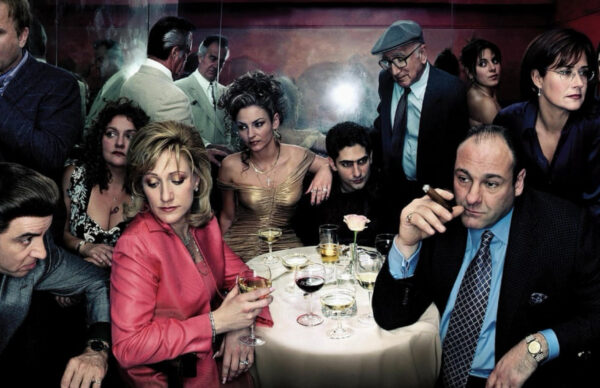“The path to enlightenment begins at the world’s deadliest wave.”
This October, Patagonia presents ‘The Yin & Yang Of Gerry Lopez’, a feature-length documentary navigating the life of one of surf’s most enigmatic heroes. Lopez’s story is presented with the grace, detail, and scope it so richly deserves for the first time.
‘The Yin & Yang Of Gerry Lopez’ explores the duality of Lopez’s zen aura that was electrified when he hits the waves, riding them with a cerebral ferocity that revolutionised surfing and earned him the nickname ‘Mr Pipeline’. In under two hours, the film traces its way through the surf boom of the 1970s, the serenity of Indonesia’s beaches, and the wild west of 1980s Hollywood – with plenty of yoga positions along the way.
Who better to tell the story of a legend than another legend, Stacy Peralta? For Peralta, the film was a chance to be a part of sharing Lopez’s story while also meditating on his placement within the pop cultural zeitgeist. The director’s career has run in parallel to Lopez’s. Instead of conquering the kinetic energy of the ocean, he redefined skateboarding on the scalding hot asphalt of Dogtown as a Z-Boy. In the last decade, he has placed himself behind the camera, utilising his nuanced vision to become a renowned director and documentarian.
We chatted with Lopez and Peralta about the ‘The Yin & Yang Of Gerry Lopez’ before its Australian screenings!

Hi Stacy. How are you?
STACY: I’m good. How are you doing?
I’m good. I’m very good.
GERRY: Hi Andrew!
Nice to meet both of you. So, firstly, congratulations on the film. How does it feel for audiences to get to check it out finally?
STACY: Well, you know what’s weird is Gerry, and I were just discussing this morning. You never know what a film is about until you put it up for audiences. Every person finds different things about the film that they like. Many times they find things that we don’t even know are in the film. He and I were discussing this today, that it’s been a real experience. You know, we’ve been in Europe touring it, and then Gerry went to Japan and toured it, and you get these different responses everywhere you go.
But all in all, it’s been very positive, and that’s been the nicest thing about it.

How did you two initially meet, and how did this project start taking shape?
STACY: He snaked me on a wave, and we ended up getting in a fight on the beach (laughs).
I met him after I made Dogtown. I was helping Vans out with another film. That was the history of the ‘Pipe Masters’. One of the interviewees, was of course, Gerry. And so that’s the first time we met. And, of course, I knew about him just about my entire life. And he had been a fan of Dogtown, the film. So it was an easy meeting. And then, we became part of the same friend group that was learning how to kiteboard together. And so I got to witness him learning kiteboarding and vice versa.
Gerry, you’ve had a history in film as an actor, which is terrific. But how did you feel when it was first like, “Hey, I think we’re going to make a documentary about your life”?
GERRY: Nervous. Doing it with Stacy was pretty reassuring because I knew he’d make a much better film than anybody else would. And so, you know, I have that confidence and even when he told me, okay, if we’re going to do this film, you have to tell me everything about your life, and I said, “everything?” and he goes, “everything”. I went okay… and it was okay. I mean, I like how the film came out and like Stacy said, each time we show it to a different and new audience, we get feedback, and just the audience’s reaction is really nice. I mean, you know that, hey, we made a film. That’s okay. That’s a good thing.
STACY: The audiences really inform us what it’s about, and you don’t know until you put it up for them and what they get out of it. It really is person to person, place to place.

Well, that leads to my next question. For Stacy, what is the process like of distilling a life down to a reasonable runtime? Is there a success predicated on whether you reward the trust Gerry’s given you or how the audience reacts?
STACY: Well, I want to add something that Gerry said. Jerry and I began this as friends. And so I said to him, when this started, I said, Look, I’m going to have to ask you questions that are potentially really uncomfortable, and I’m going to have to potentially be critical of you. I want you to know that’s me, the filmmaker, not me, the person. I got to establish that. And he said he was totally fine with that. But I needed to say that at the beginning because I didn’t want it to corrupt our friendship because we were going into something that was a form of battle. I would have to ask him and point him in directions he didn’t necessarily want to go in. We had to go in those directions to fill it out. The other thing I wanted to say is when I was approaching this; I didn’t want to make this film at first. I didn’t know how to approach his life because I couldn’t understand it. And it wasn’t until we came up with this idea of this Yin and Yang concept that I finally realised, okay, that’s a hook into his life.
And I because a friend of Gerry’s pointed out to me,” You’re trying to pigeonhole Gerry is one thing”. He’s, he’s more than one thing. He’s this, and he’s that. He’s a very successful commercial surfer. He’s also a very soulful surfer. Well, the two of them don’t really meet. But in Gerry, they do. He’s a peaceful guy on land, but in the water, he’s fierce. So again, those two things don’t meet. But Gerry was willing to discuss that’s been the challenge of his life is marrying those two poles together and going down the middle. And so when he said that and this other guy, Jim, Jimmy Hunter, said that I went, okay, that’s a hook into Gerry’s life. We can do something. As a filmmaker, that’s a beginning.
The last thing is I want to say his life is so big and filled with so many unusual chapters that it was difficult to make a film that fits into a humane time.
One of my favourite moments, and Gerry, I want to ask you about this. There’s this touching moment where you’re talking about this spiritual relationship with this wave at G-land (Grajagan Bay). And you’re kind of at that camp by yourself, and you’re forming a bond with it. Can you talk about what’s it like to share such an intimate experience on camera and see audiences react?
GERRY: Well, you know, on the one hand, saying it to Stacy was really easy. I’ve been interviewed many times in my career and by far no one has ever done it better than Stacy. Watching him interview all the other people in the film was for me going, “I think I was right”. He’s the best there is at this. He finds a little something in me or anyone. And he starts pulling at that, and you know to get stuff. Afterwards, I went, “wow” I never even knew that was in there.
STACY: I felt his surprise when he said it. And also his fear, like did I really just reveal that on camera? That’s what it felt like. And you see him, there’s a long pause afterwards, and it’s almost like he’s going, “Wow”. I really think he felt it.

There’s a lovely pause and a look in the eye where you’re taken back to that time. I love that moment.
Now, I guess the last question—spoiler alert, but also Gerry’s life so I’m not sure if we can spoil it (laughs). There’s a part at the end where you talk about being in the sharing phase in your life. I feel that applies to both of you. You’re both legends, and now you’re in this part of your lives where it’s very much about sharing knowledge and storytelling. What does that space occupy in your lives now, and why is that so important to you?
GERRY: Well, I mean, you know, I think everyone starts hopefully as a student and, you know, they learn a little bit and get a little older and life goes on. Then maybe the warrior part comes out, and you go through that phase, hopefully leading to becoming a teacher. I find that, when you’re out surfing, if you see someone struggling or having a hard time, you go and try and help them. It feels really good and makes you feel like maybe I should do this more. And so I think everybody goes through those phases in life in some form or another. We kind of went through them in the movie, and I don’t know what the next phase is, but I think it’s supposed to be where you become like a priest or something (laughs). So I’m looking forward to that, too, if that ever happens in this life.
STACY: I think he’s already in that phase (laughs).
Look, I have two answers to this. We did an interview this morning, and I was explaining to the guy that was questioning us, I said, you know, Gerry’s career has paralleled the birth of surfing; he’s experienced the growing pains of his career in parallel with the growing pains of surfing, as I have. I was one of the first professional skateboarders on Earth. Then I went on to have a successful skateboard company and started the action sports video market.
We live this thing, but while living it, we also make sense of it. We’re putting together the puzzle pieces so people can understand where this came from and what it’s about. So you look at Gerry’s film, and it makes sense of a lot of his life, and it makes sense of a lot of his journey, and it makes sense of a lot of the surfing journey. And if you look at the other films I’ve made, I hope that they’ve made sense to the other part I wanted to throw at you about that, you know, the warrior, you know, leading to the priest as we both had to start somewhere and have strong egos to get what we want. And I had to compete. Jerry had to compete. When you compete with people, you’ve got to go out and beat them. You need a strong ego for that. And fortunately, both of us have come to a place in our lives where I’d like to think that we’re able to shed that ego and go, “this is not about me at all; I was lucky to play that role”. But now I’m in a place where I realise it’s all about all of us. And so these films are a way to share what we’ve learned and experienced because everyone else has had, you know, the people that want to see this have had very similar experiences. You reach that point where you surrender the ego and become part of the whole.
That was the part of the film that resonated with me the most. I thought that was very powerful.
STACY: Well, if you look at the film, you see the waves that Gerry has ridden in his life, and you’ve seen the breaks that Gerry has ridden in his life. You know, at their infancy pipeline Ala Moana, G-Land, Uluwatu, no one on Earth had it better. Okay, but the film ends with him riding a crummy little wave in a river. And it’s just as good as G-Land, you know what I mean? To me, it’s a journey of enlightenment. You know, getting as much joy out of a curb wave. You’re just staying in one position, but it’s still fun. To me, that’s Gerry shedding his ego and just going, no, I can stand in line with 11-year-olds and have no problem taking a turn.

Definitely, by the end, it feels like a full circle, almost like a Yin and Yang!
STACY: That’s what we should call it (laughs)!
I want to thank you guys for your time and congratulations on the film.
https://www.youtube.com/watch?v=1EqldpJa5l8
Special thanks to Gerry Lopez & Stacy Peralta for taking the time to chat! ‘The Yin & Yang Of Gerry Lopez’ will coming to down under this October! For tickets to the special Q&A screenings with Gerry Lopez and Stacy Peralta or to find out more about The Yin & Yang of Gerry Lopez visit Patagonia.com.au/gerrylopez.


